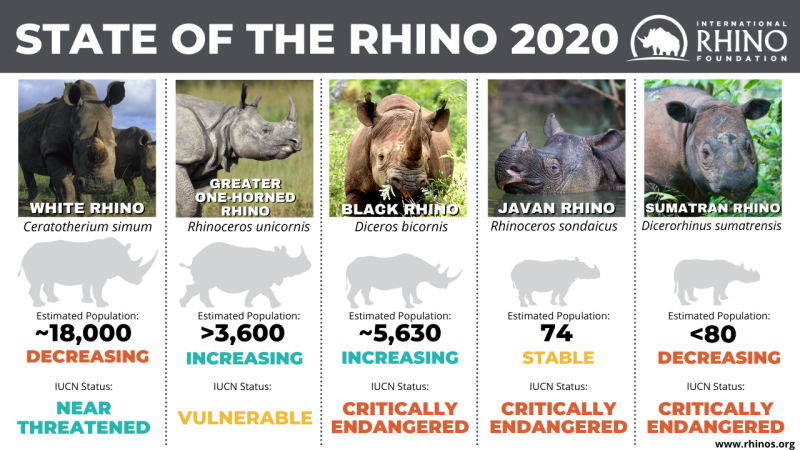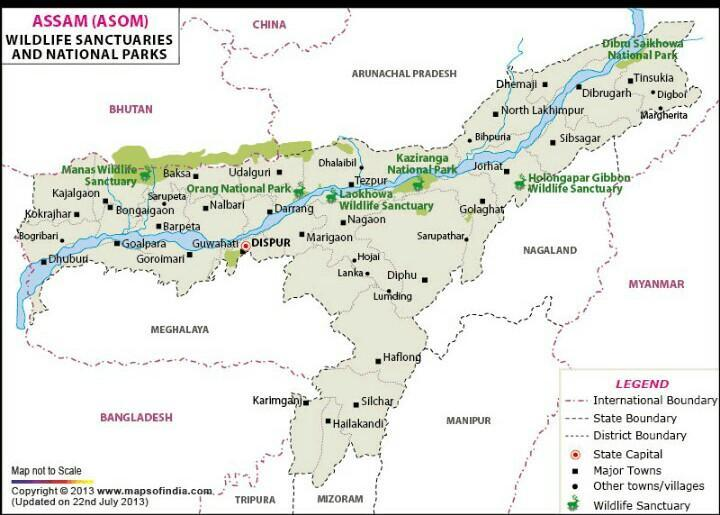
In News
Recently, the ambitious Indian Rhino Vision 2020 (IRV2020) has come to a close with the release of two rhinos in Assam’s Manas National Park transported from Pobitora Wildlife Sanctuary.
About Indian Rhino Vision 2020
- IRV 2020 was designed by Rhino Task Force 2005.
- Aims
- To increase Assam’s rhino population to 3000 by 2020, which was done by wild-to-wild translocation from Kaziranga National Park and Pobitora Wildlife Sanctuary to Manas and Dibru Saikhowa National Parks as well as Laokhowa and Burachopari Wildlife Sanctuaries.
- To reduce the risk to the rhino population, mainly from poachers by spreading the population in multiple parks with enough habitats to encourage population growth.
- To secure the long-term survival of wild rhinos in Assam by expanding their distribution to reduce risks like disease, in-breeding depression and mass mortality.
- It is a unique programme where the government partnered international, national and local organisations for the conservation of the rhinos.
- Under it, Manas has received a total of 22 rhinos from other protected areas.
- Assam had about 2,000 rhinos when IRV2020 began in 2005.
- The rhino census could not be conducted in 2020 because of Covid-19 restrictions which also delayed the IRV by a year.
- Significance
- The translocated rhinos helped Manas National Park get back its World Heritage Site status in 2011.
- Manas, in focus for the near-extinction of the pygmy hog, lost the tag it received in 1985 along with Kaziranga from UNESCO.
- It is also expected to contribute to the mixing of genes from individuals from Kaziranga and Pobitora and set up a healthy, breeding population of rhinos for the future of the species.
- The translocation and e-establishment of a breeding population has made immense contribution to the conservation of the species.
- The translocated rhinos helped Manas National Park get back its World Heritage Site status in 2011.
- The plan to introduce or reintroduce the rhino in three protected areas (Laokhowa, Burachapori Wildlife Sanctuary and Dibru-Saikhowa National Park) did not work out for reasons still not known.
- Now, the IRV2020 is believed to have achieved its target of attaining a population of 3,000 rhinos in Assam.

(Image Courtesy: IRF)
Rhinos in India
- Only the Greater One-Horned Rhino is found in India which is also known as the Indian rhino and is the largest of the rhino species.
- Features
- It is identified by a single black horn and a grey-brown hide with skin folds.
- They primarily graze, with a diet consisting almost entirely of grasses as well as leaves, branches of shrubs and trees, fruit, and aquatic plants.
- Threats
- Habitat loss and fragmentation
- Poaching (especially for their horns and hide)
- Reducing population density
- Decreasing genetic diversity
- Protection
- IUCN Red List: Vulnerable.
- CITES: Appendix I.
- Wildlife Protection Act, 1972: Schedule I.
- Other Conservation Efforts
- New Delhi Declaration on Asian Rhinos 2019: Signed by India, Bhutan, Nepal, Indonesia and Malaysia to conserve and protect the rhinos.
- National Rhino Conservation Strategy 2019: Launched to conserve the greater one-horned rhinoceros.
- Project to create DNA profiles of all rhinos by the Ministry of Environment Forest and Climate Change (MoEFCC).
- Assam accounts for its largest population in India and had at least five rhino-bearing areas till the 1980s.
- Though rhino numbers in the state have grown from 2000 in 2005 to over 2200 in 2009, more than 90% of these live in just one Protected Area, which is the Kaziranga National Park.
- Better conservation efforts helped maintain the population of the one-horned herbivore in Kaziranga, Orang and Pobitora.
- However, encroachment and poaching wiped the animal out of Manas and Laokhowa Wildlife Sanctuary.

(Image Courtesy: MOI)
Source: TH
Previous article
Facts in News
Next article
Various Traditional Festivals